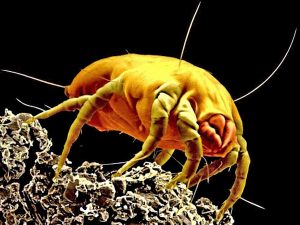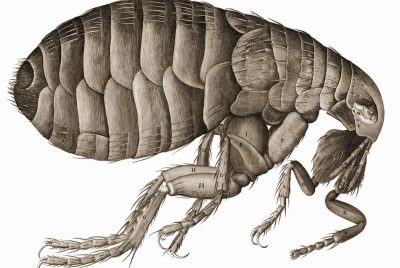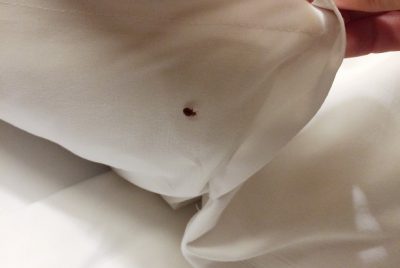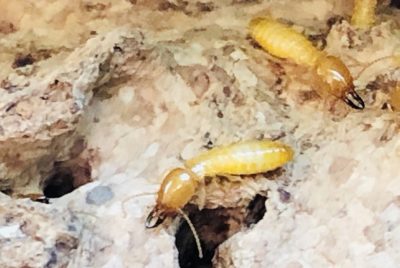HOW TO GET RID OF DUST MITES IN THE HOUSE
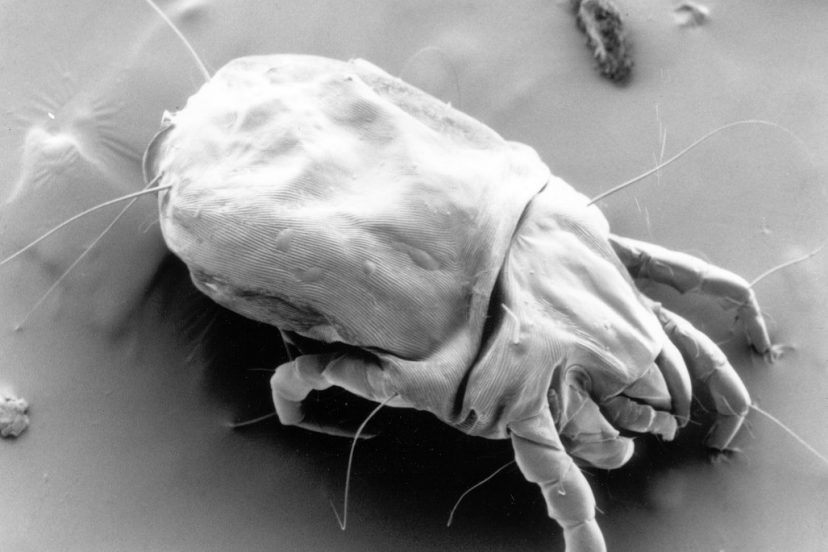
Introduction
You are probably only reading this article because you want to find out how to get rid of dust mites in your house, however, I’m sure you’ll agree, when considering common pests that are found in the home, few people will think of Dust Mites. We tend to think of larger insects and animals that are more visible and forget about the tinier insects that, ironically may be far more dangerous to our health.
What are Dust Mites?
Dust Mites are very small (measuring 0.008 – 0.012 inches in length) and it’s very difficult to spot them with the naked eye. You would typically need 10x magnification to see them.
The average life cycle of a house dust mite is 65 – 100 days, but during that time the female can lay 100 eggs.
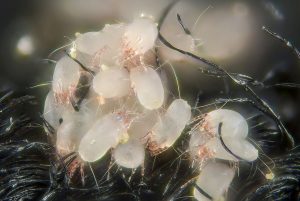
Where do Dust Mites live and what do they eat?
They feed on flakes of dead skin shed by people or their pets and some species of mold. They prefer living in dark warm and humid places. They are attracted to live in mattresses, bedding, upholstered furniture, and carpets.
The Dangers of Dust Mites
Dust Mites do not bite or in way attack humans or pets, but their danger lies in the very unpleasant side effects of their physiology and the way they live. In particular, they are the source of allergens.
Since they are unable to effectively digest their food within their bodies, they secrete enzymes and deposit a fungus, known as Aspergillus Repens, to help digest the food. It is this fungus, as well as the fecal matter of the Dust Mites that are the cause of Allergies. During the lifetime of the Dust Mite, 2000 fecal particles and an even larger amount of partially digestive enzyme-covered dust particles are produced.
These potentially dangerous particles are very light and easily waft in the air when disturbed and in this way are breathed in, mostly at night during your sleep.
Diseases caused by Dust Mites include:
Asthma

Sinusitis & Polyps
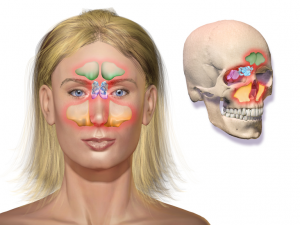
Eczema
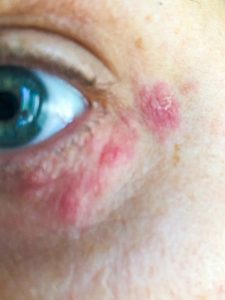
Chronic Allergies (coughing wheezing, watery eyes, itching, sneezing & nasal congestion).

It’s quite frightening to think that very few people would associate the above diseases with this common pest that lurks unnoticed in almost every home.
Ways to get rid of Dust Mites in your home
The primary ways of getting rid of these pests consist broadly of a combination of extraction, and eradication and changing the environment so as to make it difficult for them to survive.
VACUUMING

This involves thoroughly vacuuming up all dust particles, fecal matter, and the dust mites themselves at least once per week. In this regard make sure you vacuum all places in the home and particularly your mattress. Use a double-layered microfilter bag or a HEPA filter in your vacuum cleaner (otherwise you will merely redistribute the dust mites and their fecal matter.
Unfortunately, not all vacuum cleaners are powerful enough to do a proper job and therefore, if you are in the market for a new vacuum cleaner, I would recommend one of the more powerful cleaners that are designed to clean mattresses effectively
It is a good idea to wear a mask while vacuuming and stay out of the vacuumed room for 20 minutes to allow allergenic particles in the air to subside.
As an added layer of protection, once your mattress has been thoroughly vacuumed, or better still immediately after purchase, cover the mattress with an allergen-impermeable cover. These covers should also be placed over mattress box-springs and pillows.
WASHING
Make a practice of washing all bedding once a week in hot water, 130 to 140 degrees Fahrenheit. Non-washable bedding and items such as toys can be placed in the freezer overnight to get rid of dust mites.

CHANGING CERTAIN MATERIALS IN THE HOME
Consider replacing natural fabrics such as wool or feathered bedding products with synthetic materials. If possible choose bare floors or tiled floors instead of carpets and remove upholstered furniture and curtains where possible
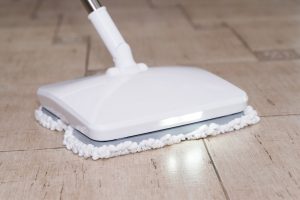
REDUCING HUMIDITY LEVELS TO 50% OF BELOW
Since Dust Mites thrive in humid environments, adjusting the humidity levels below 50% is very effective in eradicating dust mites. If you are sensitive to the allergens produced by Dust Mites, you could move to a dry environment or you could use a dehumidifier or even an air conditioner. (Incidentally, the original air conditioners were invented, not for heating or cooling, but rather for industrial drying).
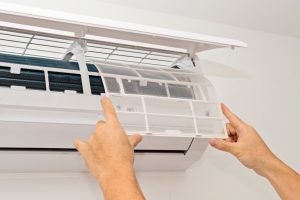
USING AIR FILTER SYSTEMS
A good solution is to purchase an allergen-trapping air filter.
Allergenic particles can remain suspended in the air for hours and be inhaled. To remove these allergens, HEPA-grade filters can be installed in your home’s HVAC system or used within portable air cleaners, which can be placed in strategic areas of the house. The portable systems are naturally less effective than a central HVAC system.

CHEMICAL SOLUTIONS
A useful technique to get rid of house dust mites in the house is to use chemicals that contain Mite-killing benzyl benzoate.
Alternatively consider using products containing tannic acid, which are designed to alter dust-mite allergens so that they no longer cause symptoms.
Note, these techniques are best implemented by professionals and I would recommend these measures only after the previous measures discussed previously have been followed.
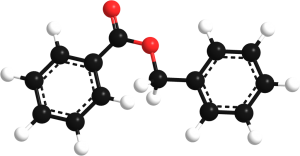
CONCLUSION
Although Dust Mites don’t bite and are so small they can hardly be seen, they can be the source of allergy-related diseases that can be severe. Follow the protocols discussed in the article to enjoy a healthier life in your home.
